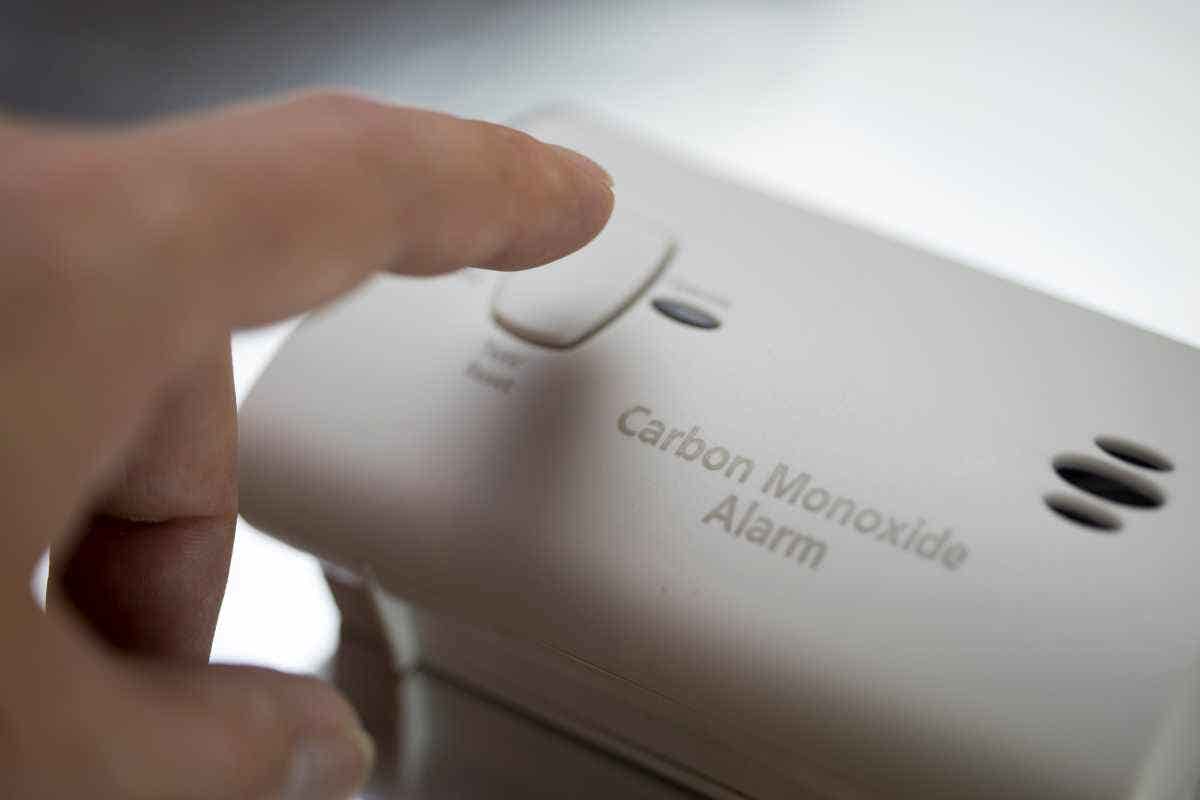Carbon monoxide (CO) is an odorless, colorless gas. That doesn’t seem so bad, but unfortunately, CO can make people very sick. In fact, around 100,000 people go to emergency departments for carbon monoxide poisoning each year. Worse? Carbon monoxide poisoning kills more than 400 people every year in the U.S.
Many household items produce carbon monoxide, including furnaces, portable generators, and charcoal grills. That’s why it’s so important to learn what carbon monoxide poisoning is, how to detect and prevent it, and what to do if you suspect carbon monoxide is making you, a family member, or a pet sick.
What is carbon monoxide poisoning?
Carbon monoxide poisoning is the result of a buildup of carbon monoxide in the blood. When you breathe in carbon monoxide, the gas starts to replace the oxygen in your body’s red blood cells. This stops vital oxygen from getting to tissues and organs. Depending on the amount of CO that’s breathed in and for how long, it can cause irreparable brain damage, heart damage, and even death.
In your home, CO can show up in fumes produced by:
-
Furnaces.
-
Kerosene heaters.
-
Vehicles in garages.
-
Stoves, lanterns, and gas ranges.
-
Portable generators.
-
Burning charcoal and wood.
Items like these and others that are poorly ventilated or used in tight spaces can cause carbon monoxide to reach dangerous levels. Because carbon monoxide has no taste, odor, or color, there’s seldom any warning that the danger is present.
What are the signs of carbon monoxide poisoning?
Carbon monoxide poisoning is most dangerous for the heart and brain. Prolonged exposure to CO can produce symptoms similar to the flu, according to the Mayo Clinic. Additional symptoms of carbon monoxide poisoning include:
-
Breathing problems.
-
Headache.
-
Weakness.
-
Dizziness.
-
Nausea or vomiting.
-
Shortness of breath.
-
Confusion.
-
Blurred vision.
-
Drowsiness.
-
Loss of muscle control.
-
Loss of consciousness.
Some neurological symptoms, like memory loss, movement problems, and personality changes, may be delayed and only come on after you think you’ve recovered. This is more common in older adults and people who lost consciousness.
Because carbon monoxide can cause brain damage or death before anyone realizes something is wrong, it can be particularly dangerous for people who are sleeping or intoxicated.
Note: If you suspect someone is suffering from carbon monoxide poisoning, immediately move them to fresh air and seek medical care.
How can I prevent carbon monoxide poisoning?
Fortunately, you can take steps to protect your family and prevent carbon monoxide poisoning in your home. The easiest? Using carbon monoxide detectors. You want to have at least one on every level of the house.
If your CO detector sounds an alarm, leave your home immediately. Call 911 after you’ve left the house.
Bonus tip: If your detectors are battery operated, be sure to check the batteries at least twice a year. (While you’re at it, you check your smoke detector batteries, too!) You might try setting a reminder in your phone or coordinating it with another calendar event, like the start and end of daylight savings time.
In addition to CO detectors, there are many other precautions you can take to protect your family from carbon monoxide poisoning. Here’s some dos and don’ts.
Carbon monoxide prevention dos and don’ts
Ultimately, carbon monoxide poisoning is something that can occur in any home, but with appropriate awareness, prevention, and detection methods, you can protect your family. Here's a list of dos and don'ts to help.
Do ...
- Make sure all gas appliances, space heaters, and wood-burning stoves are vented properly.
- Hire professionals to set up all gas, oil, or coal-burning appliances (e.g., gas stoves, forced-air furnaces) and have a qualified technician service them yearly. Remember: Pilot lights can produce carbon monoxide, so these appliances need to be kept in good working order.
- Clean the fireplace chimney and flue every year.
- Get fireplaces and woodstoves checked by a professional once per year or as recommended by the manufacturer.
- Keep vents and chimneys unblocked during remodeling. Check that they aren't covered by tarps or debris.
- Find and repair the source of the carbon monoxide before returning to a home where an incident has occurred.
Don't ...
- Leave a car running in the garage, especially if the garage is attached to the house. (This is true even if the garage door is open. CO can build up in a home even when a garage door is open.)
- Use a charcoal grill, camp stove, or other gasoline or charcoal-burning device inside your home, basement, or garage.
- Heat your house with a gas oven.
- Use a generator, pressure washer, or any gasoline-powered engine within 20 feet of window, door, or vent. If you lose power in your home, keep portable backup generators at least 20 feet away from the house
- Use barbecue grills or hibachis indoors or in poorly ventilated spaces such as garages, campers, and tents.
To learn more about dangerous substances in your home and ways to mitigate your risk, check out our blog on toxins in the home and our home safety guide.


